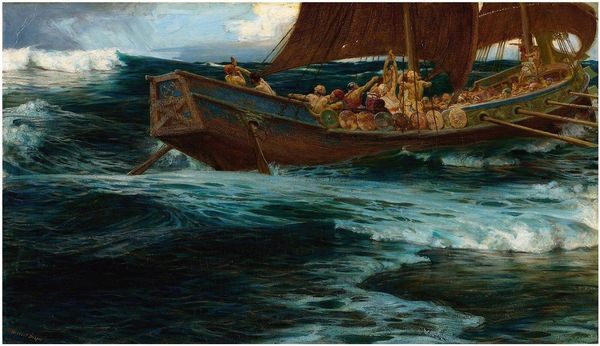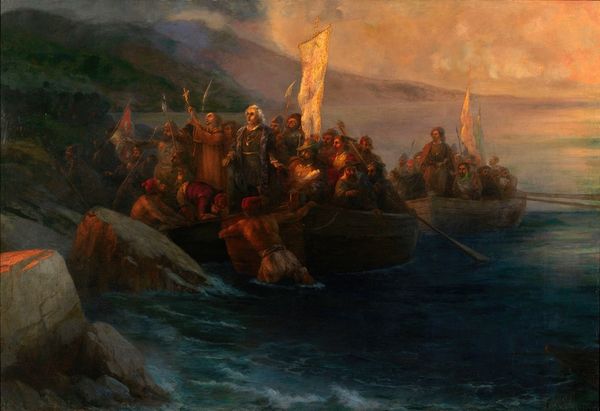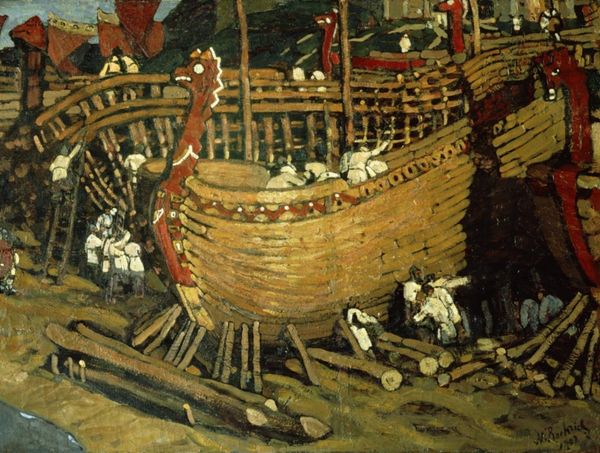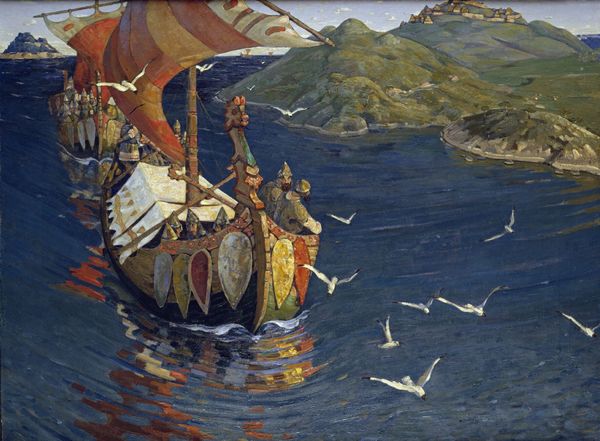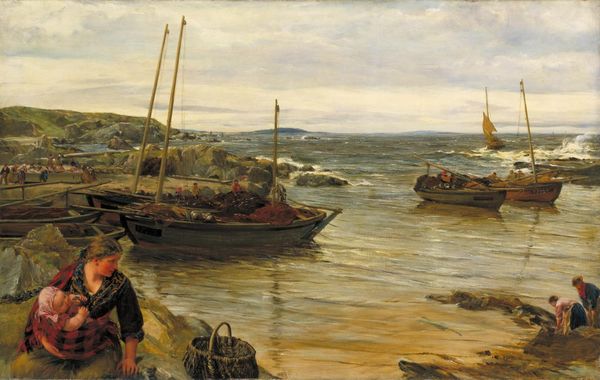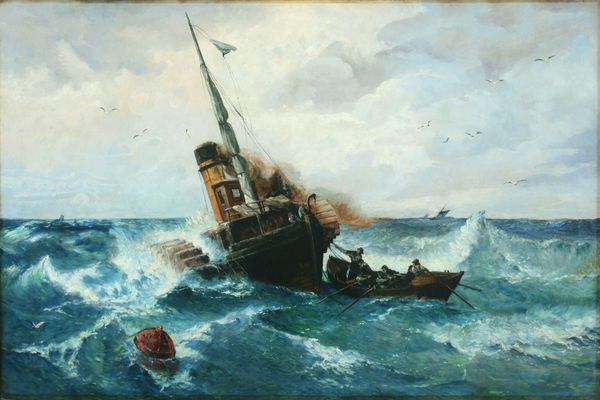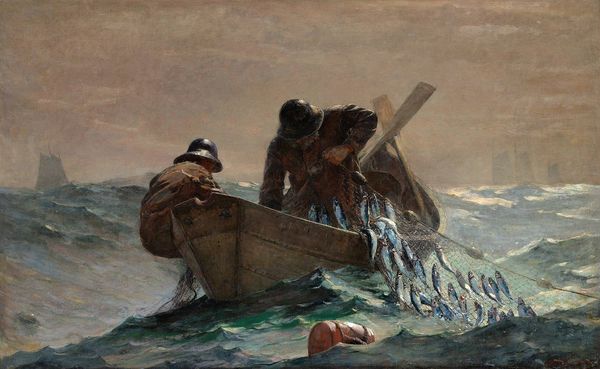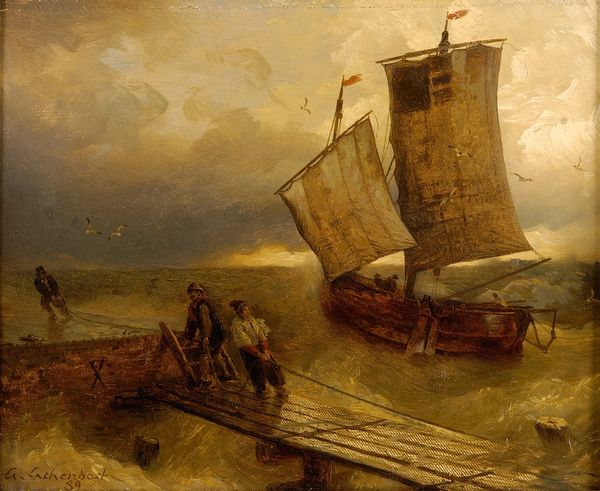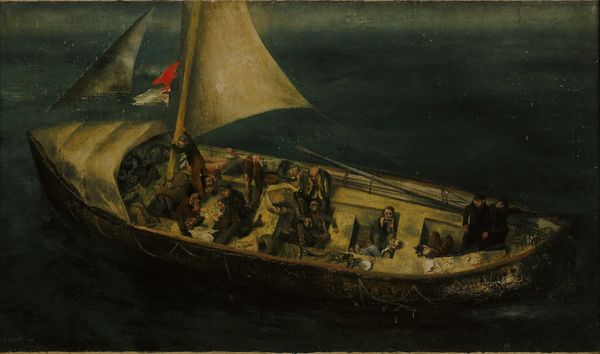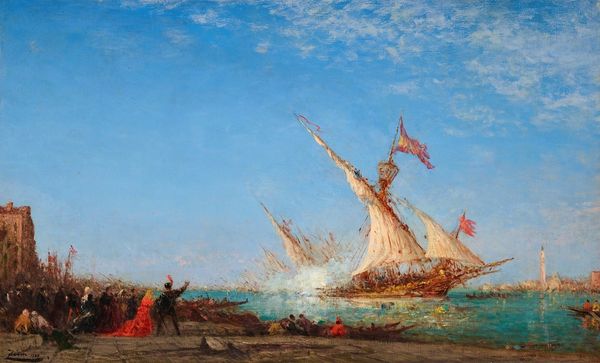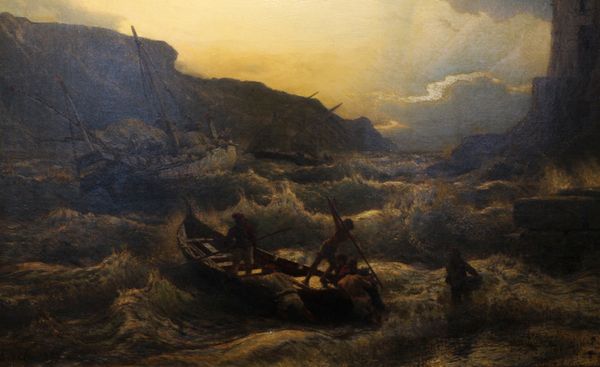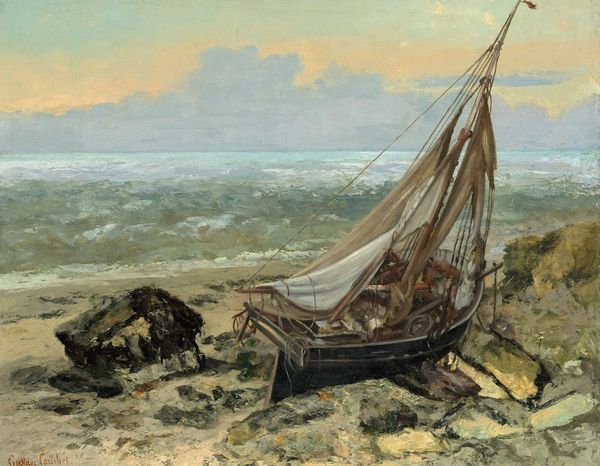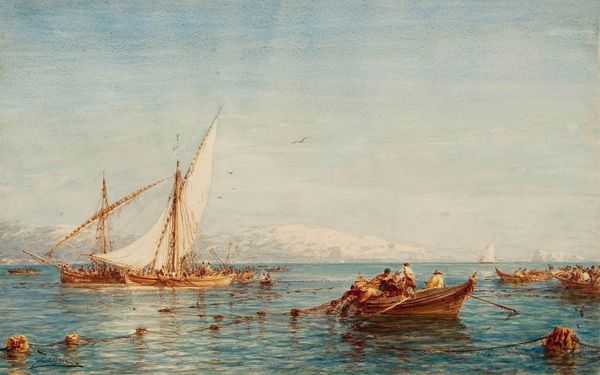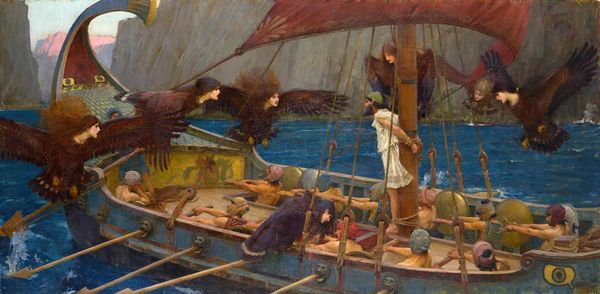
Dimensions: support: 1130 x 2121 mm frame: 1600 x 2565 x 195 mm
Copyright: CC-BY-NC-ND 4.0 DEED, Photo: Tate
Curator: My first impression? Overwhelming movement, and that light, the way it catches the pilchards. You can almost smell the sea air. Editor: Indeed. Charles Napier Hemy captured a pivotal moment in labour history with his painting, Pilchards. There’s no definitive date, but we know Hemy, born in 1841, was deeply inspired by maritime life. Curator: It's not just about the work, though, is it? Look at how the men are crammed together, a real sense of collective effort… and vulnerability. Editor: Absolutely, the collectivity. The focus on labour evokes socialist realism, while the naturalistic depiction ties it to debates around class and environmental exploitation. Curator: I keep thinking about all those fish. This painting has such life in it, it's like a small, salty world. Editor: And isn’t that the point? It's a reminder that these seemingly small lives are integral to larger structures and histories. Curator: Yes, food chains, labour chains, all those connections. Hemy really put those together. Editor: Hemy certainly prompts us to consider those complex interdependencies, and what they mean for all of us even today.
Comments
Join the conversation
Join millions of artists and users on Artera today and experience the ultimate creative platform.
tate 8 months ago
⋮
Hemy settled in Falmouth, Cornwall, in 1881, aiming to paint the sea and ships ‘always from nature’. Fishing by a long ‘seine’ net was a method thought to date from the time of Christ’s disciples. It involves paying out the seine net all round the shoal of pilchards, tying the ends, then dropping a smaller tuck net into the shoal and scooping up the fish in baskets. Hemy made studies of the process over fourteen years, but painted the picture in ten days. Gallery label, May 2007
